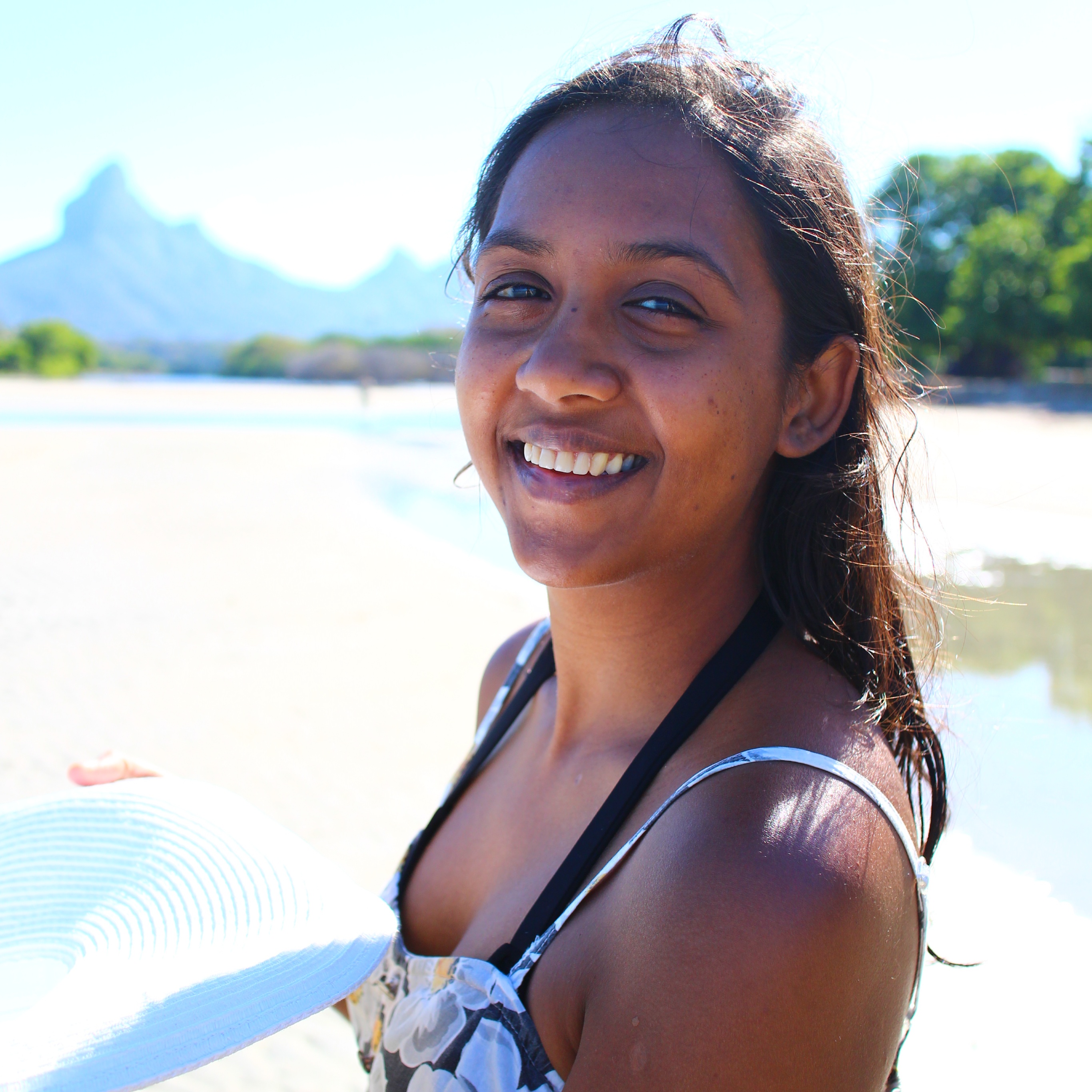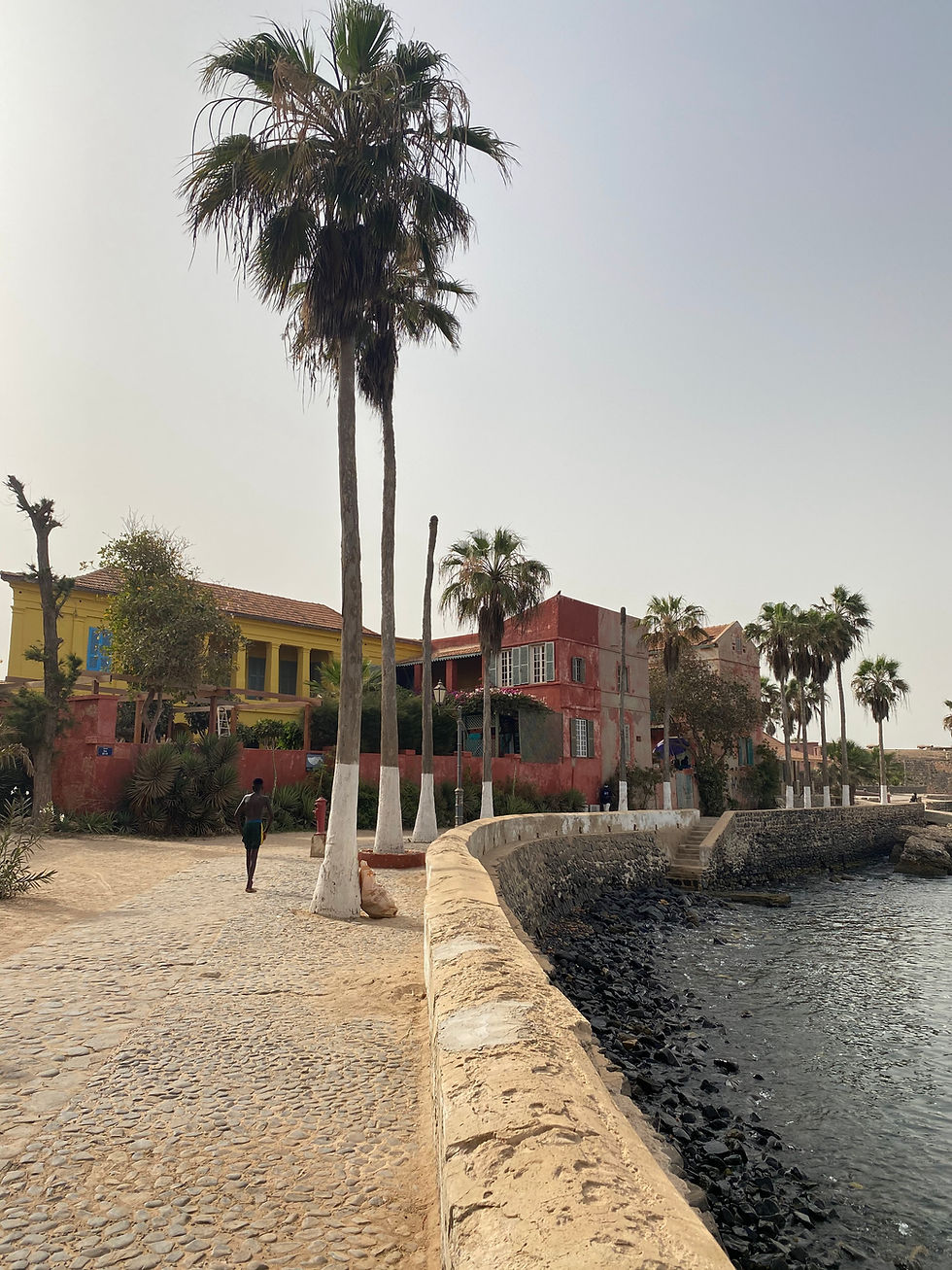Ile de Goree
- barkhamossae

- May 23, 2021
- 5 min read
I wrote and rewrote the start of this blog multiple times, before realising there is no "right" way of writing about Ile de Goree, the small islet off the coast of Dakar which saw personalities like the Obamas visit for a "homecoming" and which is known as the site of one of the most grim, painful chapters of global history: slavery. To introduce Goree from its historical role on slavery would be to reduce it to just that; to introduce it otherwise would be to ignore this very big elephant in the room.

In our boring classrooms in Mauritius, we were taught, in dry terms, about slavery. The bodies that were stolen from the mainland to fuel the riches of the Empires and the European countries - Britain, France, Portugal, the Netherlands, Spain, Denmark, and so many others. Bodies brought to Mauritius to cultivate sugarcane, to build infrastructure, to build a whole nation - for the benefit of others. We were taught how these nameless figures were auctioned off, how they were punished, how their freedom was restricted with extraordinary violence. We were taught about Le Morne, a mountain in Mauritius where slaves would run away to hide, and when slavery was abolished, they saw the emissaries coming up with the news of their freedom but thinking they'd been found, decided to jump off the mountain and die instead. So in a way, I was familiar with some of the things I saw - this history is my history.
I was a bit apprehensive about going to Ile de Goree. The ferry set off from the Dakar port area, and we marvelled at the cargo vessels and port infrastructure. As we approached Ile de Goree, I couldn't help but think of the people who were ferried here in completely different conditions. This unassuming small strip of land, 3.5km off the coast of Dakar, has changed human history forever: it is the site of unimaginable horrors, and it's also been instrumental in building the wealth of the Western world.
Goree used to be one of the most important, if not the most important, slave trade centre between the 15th and 19th centuries. Thousands upon thousands of African men, women and children were stolen from the continent and sent to the other side of the Atlantic, to become foder for the greed and inhumanity of Western nations. This bit of land that we see here, this is where they would walk their last footsteps on African soil.
As we landed, the vibe was completely different from what I imagined. Cheerful beats, haggling trinket-sellers, happy sounds from locals taking a dip in the sheltered bay mingled with the commotion of the crowd leaving the ferry.

^ Garden adjacent to the house of slaves.

The buildings were all shades of bright pink, ochre, burnt red and other cheerful colours - small details like creeping bougainvillea and flower pots making them even more beautiful.

We walked towards the House of Slaves. Before you enter the House itself, a gallery describes the slave trade, the numbers, the atrocities, but also the way systems evolved around slavery - for instance the "signares" - mulatto women who acquired money and influence in society by participating in the trade.


^ Could signares be an example of female empowerment or exploitation - participating in an inhumane practice to survive. What were their thoughts, how did they pray?
Fraser was shocked, and mentioned that school curriculums needed to be updated to reflect this part of story as people are simply not taught the horrors that their wealth is built upon. I can well imagine that the countries who profiteer - and I use the present tense because wealth is cumulative - would relegate mentions of the slave trade to an abstract, sanitised concept that existed in the past. Yet, that is not so. The sheer wealth built on the literal backs of Africans continues to benefit Western nations and their people - including him.

I wondered whether I should point out that Glasgow built its wealth on the slave trade, growing from a drab collection of bastions alongside the Clyde River, to one of the powerhouses of the Empire courtesy of the Tobacco Lords who dominated the tobacco trade, fuelled by slave labour, and the slave trade directly. I wonder if this history was taught to him, or to other kids in Liverpool and other places in the UK which grew from the slave trade.

Every country wants to paint itself in a good light, of course, but to obviate complete aspects of history from public reckoning is dishonest, and frankly, weak.


The House itself is built on two levels and Fraser compared it to the castle in Ghana - how do the "fine" gentry party here, while just below them hundreds of humans are stacked like animals, howling in pain and despair, and then shoved through the chilling Door of No Return to a brutal fate in the Americas - if they survived the voyage at all.

^ The door of no return, seen from the balcony upstairs where parties and soirées were hosted. The last time they touched African soil.


^ what do white people feel when they encounter the door of no return?
After the heaviness of the House of Slaves, we walked through the island's winding, colourful streets. The colours, the flowers, the joyful cries of children playing in the street, the streams of music emanating from courtyards - this is Goree now: a thriving community of artists and people who simply live here.

I must have taken ten million photos of courtyards and doors and bougainvilleas - little pops of colour and beauty everywhere - until Fraser despaired of ever seeing his phone again.

^ Cat minding its own business...

^ you want a piece of me lady?!

Effortless beauty in the doorways:






That colour palette...

LOADS of cats...

Romantic sunset...

One thing we can see from the island: we do not forget our past, but we also choose not to remain there. Art, laughter and time: the three ingredients to transmute the past into a hopeful future?
Fraser convinced me to take a dip in the water by the Plage des Amoureux, which turned out to be FREEZING - when will I learn not to trust a Scotsman on temperature? - and I revealed my inner crazy cat lady.



We walked down the roads a little more, and a different vibe emerges as the sun goes down.



Pit stop at the museum, but it was closed.



Everyday life...

And the ever present pirogues.


One of many arts and cultural centres...

As we took the ferry back to mainland Dakar, a busker surprised us with an impromptu concert. I am glad I visited the island, and glad I visited it with a travel partner with whom I could openly discuss, exchange and feel all the feelings from the visit with. After all, the only way we can redress these historical wrongs is through dialogue and being aware of each other, of where we come from.













































Comentarios